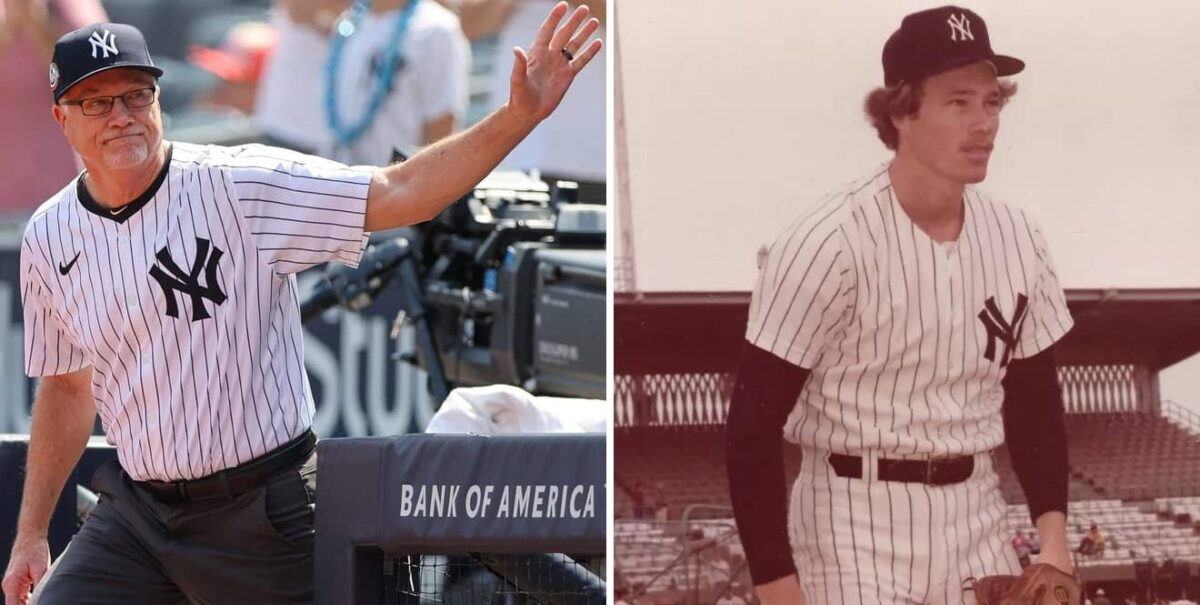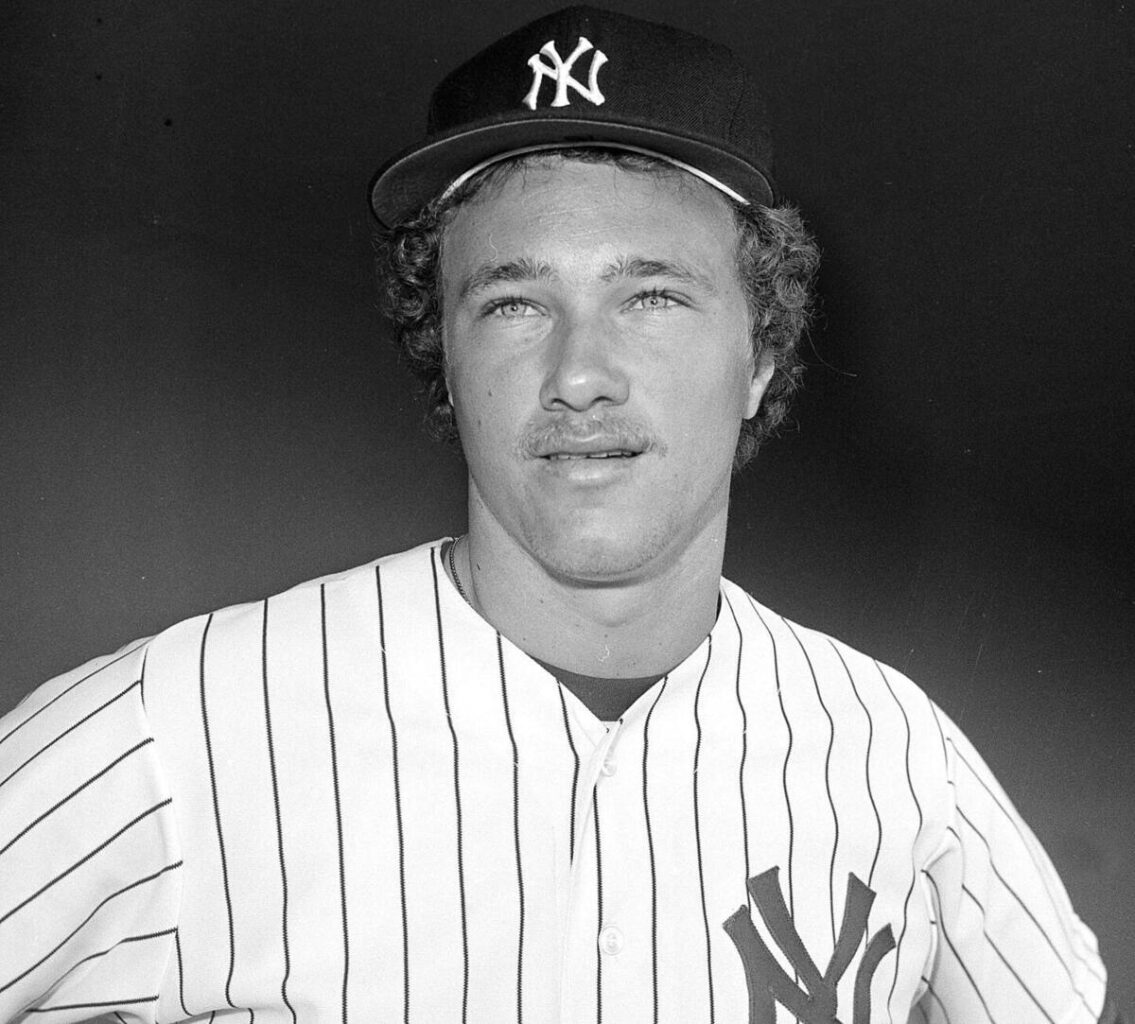Wait by ex-Yankees player for Topps Card face change nears five decades


Michael Bennington
More Stories By Michael Bennington
- Mother’s Day: How Anthony Volpe’s mom molded him into a Yankee phenom
- Blake Snell to Yankees? Weighing the pitching powerhouse’s worth in the Bronx
- Aaron Judge refutes interference in Yankees’ offer of bigger AAV to Juan Soto
- Yankees, Grisham agree on one-year extension for $5M plus incentives
- Yankees keen to sign Buehler, who won 2024 championship with Dodgers
Table of Contents
Once a Yankees rookie, Gil Patterson, now 68 and marking his 50th year in baseball, reminisces about his career and the quirky legacy of his 1977 Topps baseball card. At 21, Patterson was a top prospect in the New York Yankees’ “Bronx Zoo” era and earned a spot on a prized rookie card featuring him along with Don Aase, Bob McClure, and Dave Wehrmeister.
However, an image mix-up occurred on card No. 472. Instead of Patterson, the card showed Sheldon Gill, a catcher with a brief stint in A-ball. Patterson’s anticipated future with Topps never fully materialized, despite assurances from Sy Berger, a key figure at the company.
While the other players on the card accumulated over 1,200 major league games collectively, the ex-Yankees player’s career spanned only 10 appearances. His sole highlight was a victory over future Hall of Famer Bert Blyleven of the Texas Rangers, which became his only career win.
Patterson humorously noted that he still owes former Yankees owner George Steinbrenner 299 wins, a nod to a long-ago promise of reaching 300 victories.
Currently the minor league pitching coordinator for the Oakland Athletics, Patterson recently joined the Yankees’ Old-Timers’ Day celebrations. Wearing his 1977 championship ring and a pinstriped jersey with his old number 22, Patterson reflected on the World Series win that eluded him due to an arm injury.
Despite his brief major league tenure, Patterson continues to receive requests to autograph his 1977 card. Though he is often surprised by the interest, he appreciates the gesture and signs the cards with someone else’s image featured prominently. This enduring curiosity about the ex-Yankees pitcher’s card highlights the bittersweet nature of his career.

Gil Patterson’s rapid ascent through the minor leagues was a highlight of his early career. By age 20, he had climbed three levels, amassing a 24-8 record with a 2.26 ERA over two seasons. His promise was so strong that the Yankees refused to trade him for established stars like Tony Perez of the Cincinnati Reds, and they initially resisted including him in a deal for Bucky Dent, only conceding when LaMarr Hoyt was substituted—a player who would later win a Cy Young Award.
Moss Klein, the Yankees’ beat writer for the Star-Ledger at the time, remarked that Patterson’s arm was a key asset, thwarting several trade proposals as the team anticipated a bright future for their potential ace.
A short Yankees stint but an awesome MiLB coaching career
Bucky Dent recently reflected on Patterson’s talent, praising his performance against the Boston Red Sox at Fenway Park, where the ex-Yankees arm struck out eight batters in 5 ⅔ innings. Carl Yastrzemski also lauded Patterson, placing him among the top young pitchers he had ever witnessed. Yastrzemski likened Patterson’s deceptive delivery to Nolan Ryan’s, noting how Patterson’s pitches seemed to have an explosive effect on batters.
Despite this promising start, Patterson’s career was marred by arm problems that surfaced before his major league debut. He described pitching pain as feeling like a knife slicing through his arm with every throw. These issues were likely exacerbated by overuse during his 20-year-old season, where the ex-Yankees pitcher pitched an estimated 280 innings, including time in instructional leagues and winter ball. This was before the adoption of pitch counts and innings limits.
Patterson now underscores the importance of managing young pitchers to prevent overexertion. At 21, he followed instructions without considering long-term consequences. He advises that modern coaches and managers should be proactive in removing pitchers from games, as players are often reluctant to request relief themselves.
Patterson’s experience serves as a cautionary tale and underscores the evolution of player management in baseball, with a growing emphasis on preserving young talent for sustained success.
Gil Patterson’s career was defined by resilience and transformation. After enduring eight surgeries to address issues with his rotator cuff, labrum, ulnar collateral ligament, and other areas, Patterson missed two full seasons and spent the following three years playing partial seasons in the lower minor leagues. In 1983, with his baseball career in limbo, Patterson took a job parking cars at a Fort Lauderdale restaurant. There, he practiced throwing left-handed against the restaurant’s walls after hours.
One evening, Yankees owner George Steinbrenner recognized Patterson and offered him a lifelong coaching position with the team. However, this opportunity was short-lived. In 1984, while coaching a Yankees farm team, Patterson was dismissed after he refused to let Al Leiter, a young pitcher experiencing arm soreness, continue pitching through pain.
Later, when Leiter’s career faced further jeopardy from injuries, Patterson stepped in to help him reconstruct his pitching mechanics, ultimately saving Leiter’s career. Following this, Patterson worked at Bucky Dent’s baseball school before embarking on a coaching career that spanned 33 seasons with teams including the Oakland Athletics, Yankees, Arizona Diamondbacks, and Toronto Blue Jays. Notably, Patterson played a key role in Roy Halladay’s Cy Young Award win with Toronto in 2003.
Craig Lefferts, a long-time colleague of Patterson’s with the Athletics, praised Patterson’s coaching impact, likening it to the influence of a Hall of Fame player on the field. Lefferts highlighted Patterson’s deep commitment to his players and his advocacy on their behalf.
Reflecting on Patterson’s career, Lefferts, who enjoyed a successful 12-year major league stint, often ponders what might have been had Patterson’s arm stayed healthy. The two frequently discuss Patterson’s potential and the stellar career that was cut short.
Patterson’s journey underscores his significant contributions as a coach and mentor, while also serving as a poignant reminder of a playing career altered by injury.
For 47 years, Gil Patterson has pondered the what-ifs of his career. He’s envisioned different outcomes—whether struggling, thriving, or perhaps achieving financial success. Yet, Patterson stresses that monetary gain was never his main goal.
Patterson reflected on his values, likening the hypothetical choice between winning a vast lottery at a young age and having a fulfilling 10-year pitching career. He unequivocally favored the latter, underscoring his profound love for the game.
Despite his short stint in the majors, Patterson takes pride in having played for a storied franchise like the Yankees. He regrets, however, the absence of video footage from his playing days, which has intensified his wish for another tangible reminder of his career: a Topps baseball card featuring his real image.
In his quest, Patterson reached out to Topps, sharing his story and emphasizing the unique circumstances of his original card. Although Topps generally does not issue cards for coaches, the company’s response to Patterson’s request was positive.
The Allen & Ginter set by Topps, known for including a variety of figures associated with baseball, is seen as a potential avenue for Patterson to finally receive a card with his true likeness. It’s suggested that if sportswriters can have their own baseball cards, it would be fitting for Patterson—who has 10 major league appearances and a half-century in the sport—to have one as well.
Patterson’s story highlights his lasting bond with baseball and his desire for a meaningful piece of memorabilia from his brief yet notable major league career, reflecting the sentimental value such items hold for players and fans.
What do you think? Leave your comment below.
- Categories: ex-yankees, gil patterson
- Tags: ex-yankees, gil patterson


 Follow Us
Follow Us








